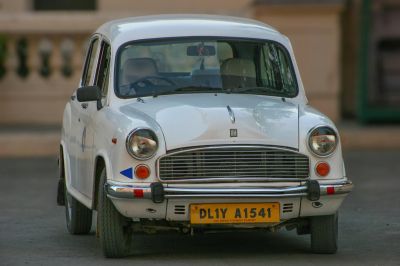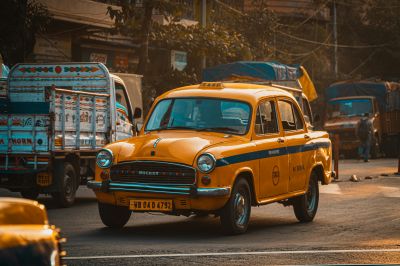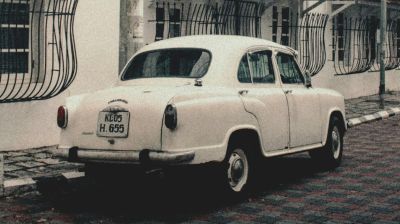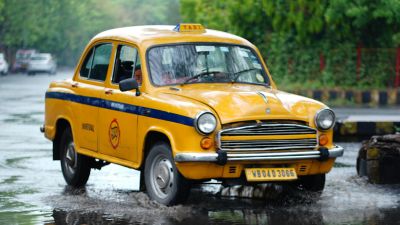Hindustan Ambassador

- Year: 1957 – 2014
- Manufacturer: Hindustan Motors
- Body Type: Sedan
- Fuel Type: Petrol, Diesel
- Status: discontinued
- Dimensions (L×W×H): 4325 mm × 1662 mm × 1600 mm
- Also Called:
- Morris Oxford Series III
The Hindustan Ambassador, a stalwart of Indian roads for decades, was a symbol of national pride and enduring reliability. Based on the Morris Oxford Series III, its production spanned from 1957 to 2014, making it a truly iconic vehicle. Characterized by its boxy design, sturdy build, and relatively simple mechanics, the Ambassador was known for its robustness and ability to handle India's diverse road conditions. While its technology remained largely unchanged throughout its lifespan, it garnered a devoted following for its affordability, ease of maintenance (largely due to readily available parts), and its association with Indian history and culture. Its lack of modern safety features and fuel efficiency, however, ultimately led to its decline in popularity against more contemporary competitors. The Ambassador remains a nostalgic icon, a testament to a bygone era of automotive simplicity.
Generations
Mark I (1957 to 1963)
The Hindustan Ambassador Mark I (1957-1963), a foundational model for India's automotive industry, was essentially a locally assembled version of the Morris Oxford Series III. This marked the beginning of Hindustan Motors' long association with the iconic design. While mechanically similar to its British counterpart, the Mark I already showcased localized adaptations to suit Indian road conditions and preferences. The vehicle featured a robust, if somewhat dated, design, showcasing the then-modern features of the original Oxford, including a relatively spacious cabin for its class and a solid build quality appreciated for its durability. Production numbers were relatively low compared to later marks, reflecting the nascent stages of India's automotive manufacturing. The Mark I laid the groundwork for what would become an enduring symbol of Indian motoring culture.
Mark II (Nov 1963 to June 1975)
The Hindustan Ambassador Mark II (November 1963 – June 1975) represented a significant refinement over its predecessor. Though still based on the Morris Oxford Series III, Hindustan Motors incorporated several changes aimed at enhancing performance and addressing some of the limitations of the Mark I. These improvements, while incremental, were crucial for adapting to the evolving needs of the Indian market. The Mark II often saw subtle design tweaks, improvements in engine efficiency, and adjustments to the suspension for improved handling on often rough Indian roads. The increased production capacity during this period reflected the growing demand for a reliable and relatively affordable car in India. The Mark II significantly extended the Ambassador's lifespan and cemented its position as a versatile vehicle for both personal and commercial use.
Mark III (1975 to 1979)
The Hindustan Ambassador Mark III (1975-1979) marked a relatively short but significant phase in the Ambassador's production. While visually similar to the Mark II, the Mark III introduced further subtle enhancements focusing on reliability and minor mechanical upgrades. These often included improvements to the engine, perhaps tweaked for better fuel economy or improved performance. The changes were primarily aimed at enhancing the already proven design rather than implementing major overhauls. This period saw a continuation of the Ambassador's dominance in the Indian market, demonstrating its adaptability and enduring appeal. The transition from Mark II to Mark III was a smooth evolutionary step within the Ambassador lineage.
Mark 4 (1979 to 1990)
The Hindustan Ambassador Mark IV (1979-1990) represents a longer and more substantial era in the Ambassador's history, showcasing a sustained period of production and further refinements. While outwardly maintaining the familiar boxy silhouette, this generation incorporated various changes over the previous iterations. These changes might include updated interior appointments, minor exterior styling adjustments, and ongoing refinements to the engine and mechanics for increased durability and fuel efficiency. The Mark IV benefited from a decade-long period of production allowing for the implementation of improvements based on customer feedback and evolving manufacturing capabilities. This version is often considered a hallmark of the Ambassador's legacy, representing its peak in terms of both production numbers and cultural significance as it solidified its place as a staple of Indian roads and culture.
Ambassador Nova
The Hindustan Ambassador Ambassador Nova, produced from 1985 to 1990, represented a relatively minor facelift of the long-running Ambassador design. While retaining the iconic boxy shape and Morris Oxford Series III-derived underpinnings, the Nova featured updated front grille and headlight designs, aiming for a slightly more modern aesthetic. Mechanically, it remained largely unchanged, continuing to use the 1.5L petrol engine, though some minor improvements in fuel efficiency were claimed. The Nova, like its predecessors, was popular for its ruggedness, affordability, and spacious interior, solidifying its place as a staple of Indian roads, despite its outdated technology compared to newer international offerings. Its relatively simple mechanicals made it easy and inexpensive to maintain, contributing to its sustained popularity.
Ambassador 1800 ISZ, Classic
The Hindustan Ambassador Ambassador 1800 ISZ and Classic models represent a late-stage attempt to modernize the aging platform. Introduced in the late 1990s and early 2000s, these variants featured a larger 1.8L Isuzu-sourced diesel engine (ISZ), offering significantly improved power and torque compared to earlier petrol models. The "Classic" designation often referred to specific trim levels and cosmetic changes rather than a distinct model. While the engine upgrade provided a much-needed boost in performance and efficiency, the fundamental design remained unchanged, still relying on the outdated chassis and suspension of the original Morris Oxford design. This ultimately limited the effectiveness of these upgrades, and the cars still lagged behind contemporary vehicles in terms of safety, handling, and refinement.
Final Generation
The final generation of the Hindustan Ambassador, produced until 2014, marks the end of an era for the iconic Indian vehicle. While no major design changes occurred in this final iteration, the car continued to face increasingly stringent emission regulations and competition from more modern vehicles. Production was significantly reduced, and the model struggled to remain competitive in a rapidly changing automotive market. This final phase was characterized by dwindling sales and a diminishing spare parts supply chain, eventually culminating in the end of production, leaving behind a rich legacy as a symbol of India's automotive history. The final model largely maintained the mechanical elements of its predecessors, showcasing the long lifespan and enduring design, albeit one increasingly out of step with global trends.



